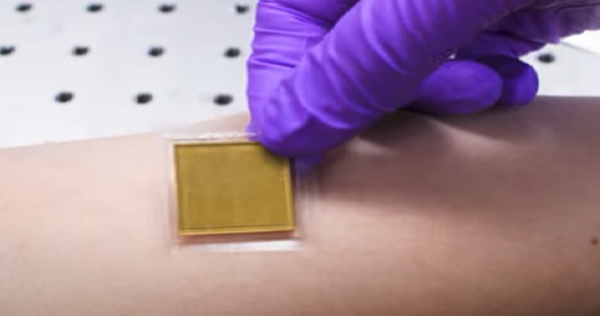
While fear and hysteria resounds amongst senior citizens that the CAT scan they are receiving could be hacked, MIT researchers have upped the ante, as micro-stickers may replace the beastly and bulky medical imaging units supporting contemporary medicine.
Why not deal with one room sized unit, when a sole x-ray technician can affix a series of mini-smart devices do explore the innards of a patients body? According to a paper published by the engineers in the journal, Science, the generation of diminutive ultrasound devices, may replace the angst caused by the claustrophobic conditions presented by crawling into an MRI tube. However, the peace of mind comes with a gnawing wariness of an individual’s organ health status being beamed back to North Korea in furnishing data and the parameters for building a conformist clone.
The small units interface with a base control console which translates the ultrasound waves into images in providing doctors with a non-invasive method of peering directly into the human body, while allowing the subject to remain mobile and enjoy everyday life outside of a medical facility. Scientists hope that as the technology is refined, obsolete mechanisms can be replaced and diagnoses improved.
The stamp-sized devices, which are attached to the skin with a gel-like substance, integrate next-gen hardware and data driven algorithms which make it possible to capture images of organs and the internal components of the body. A long-range wireless feature is being tested so that patients can be monitored remotely, creating both a potentially beneficial addition which includes freeing up hospital space, and a posing an equally possible threat, at least from a privacy standpoint, should the hardware be utilized under nefarious pretenses.
While the bioadhesive ultrasound (BUAS) unit could revolutionize medicine, the possible ramifications of hacking must be addressed. If modern vehicles with keyless and electronic can be hijacked by electronic opportunists, why not humans, or at least the telemetry data? In the era of overengineering weighing the consequences remains a crucial practice, as humanity acclimates to life gravitating online.